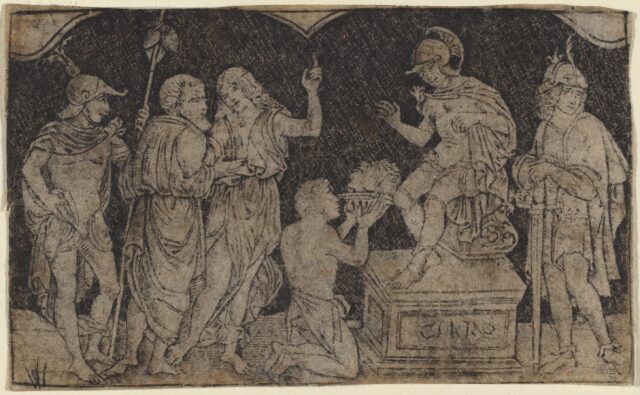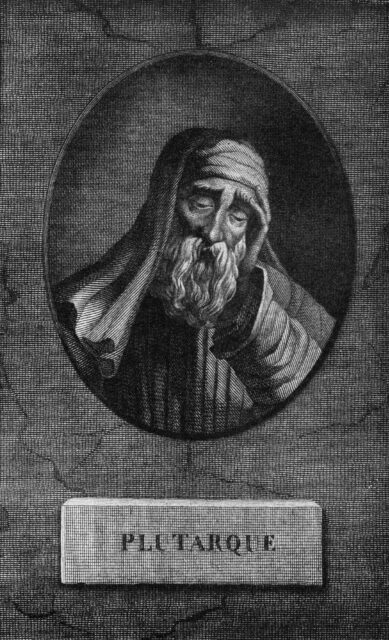Scaphism is arguably the most gruesome method of execution ever developed in the history of mankind. Intended to torture a person over the course of several days, scaphism literally caused the victim to rot, with methods put in place to increase their pain. The inclusion of insects and vermin made this an absolutely atrocious way to die. Some people might be relieved to know that no one is sure if this execution method was ever truly carried out.
The ancient Persians came up with this brutal torture method
Attributed to the ancient Persians is the creation of one of the most disgusting, painful, and gory torture methods ever created by man. It is called scaphism, but was also known as “the boats,” and it was an absolutely atrocious way to die. It is believed to have been created around 500 BC, with the word deriving from the Greek word “skáphē,” meaning “bowl” or “grave.”

People convicted of crimes and sentenced to scaphism found themselves placed between two hollow logs or boats, nailed together tightly so that they were trapped. Their extremities, including their arms, legs, and head, were kept outside. Then, the victim was force-fed milk and honey. This would cause them to suffer from diarrhea, which would become trapped inside the boat or log.
The executioners would then pour milk and honey over the victim’s face and limbs, which, along with their fecal matter, would attract bugs and vermin that would devour their flesh from the outside and inside. Death by scaphism was a very prolonged misery, with the victim suffering for several days – sometimes weeks – before they actually died.
The first written mention of the punishment
The first written source that mentions scaphism was the Greek-Roman philosopher Plutarch’s Life of Artaxerxes. It is he who attributed the torture method to the Persians. In the source, Plutarch describes a series of events involving King Artaxerxes II and a soldier named Mithridates that included death by scaphism.

As told by Plutarch, Mithridates had killed the brother of King Artaxerxes II, named Cyrus the Younger. Cyrus wanted to overthrow the king, and so Artaxerxes was grateful for Mithridates slaying him and preventing him from carrying out the overthrowal. However, Artaxerxes requested that Mithridates keep his killing a secret so that he could claim credit for the death of his brother himself. Unfortunately, in a drunken state, Mithridates bragged that it was he who had slain Cyrus.
When Artaxerxes heard of this boasting, he sentenced Mithridates to death by scaphism. Plutarch wrote that the king had “decreed that Mithridates should be put to death in boats; which execution is after the following manner: Taking two boats framed exactly to fit and answer each other, they lie down in one of them the malefactor that suffers, upon his back.
“Then, covering it with the other, and so setting them together that the head, hands, and feet of him are left outside, and the rest of his body lies shut up within, they offer him food, and if he refuse to eat, they force him to do it by pricking his eyes; then, after he has eaten, they drench him with a mixture of milk and honey,” he continued.
“When the man is manifestly dead, the uppermost boat being taken off, they find his flesh devoured, and swarms of such noisome creatures preying upon and, as it were, growing to his inwards.” Supposedly, insects were the first to arrive on the suffering victim, followed by the vermin which would crawl inside their bodies to feast.
In the case of Mithridates, he endured 17 days of this torture before he ultimately died.
Zonaras’ interpretation of scaphism
The only other written historical source of scaphism was produced by the 12th-century Byzantine chronicler, Joannes Zonaras. Believed to be based on the writings of Plutarch, Zoranas also wrote how the ancient Persians “outvie all other barbarians in the horrid cruelty of their punishments.” In his Annals, Zoranas also described the process of scaphism.

“Two boats are joined together one on top of the other, with holes cut in them in such a way that the victim’s head, hands, and feet only are left outside. Within these boats the man to be punished is placed lying on his back, and the boats then nailed together with bolts,” he wrote. “Next they pour a mixture of milk and honey into the wretched man’s mouth, till he is filled to the point of nausea, smearing his face, feet, and arms with the same mixture, and so leave him exposed to the sun.”
“This is repeated every day, the effect being that flies, wasps, and bees, attracted by the sweetness, settle on his face and … torment and sting the wretched man. Moreover his belly, distended as it is with milk and honey, throws off liquid excrement, and these putrefying breed swarms of worms, intestinal and of all sorts.”
Beyond Plutarch and Zoranas, there are practically no other mentions of scaphism in written history.
Somehow, it got even worse
If it seems that scaphism couldn’t get any worse, it did. Executioners would work to make sure the victim suffered the most pain possible by employing additional methods of torture. More milk and honey were poured onto the genitals and anus of the victim, which attracted insects to those areas.

These insects then fed on the victim’s soft tissue, causing infection to the wounds through bacteria. The infected area would then produce pustules that would leak, promoting the growth of maggots, which would breed inside the victim’s body.
This would, understandably, feel like a lifetime to the victim. Unable to defend themselves against any of these hungry creatures, they would have to suffer as the vermin chewed on their body, and in some cases entered their body to eat them from the inside out.
A modern-day mortician said scaphism would be the worst way to die
Caitlin Doughty runs a popular YouTube channel called Ask a Mortician. In one of her videos, she posed the question “What is the worst way to die?” and her answer was scaphism. She then described the act using some colorful language.

“First, your body is stripped naked and you’re put between two hollowed-out logs with your head and limbs sticking out,” she explained. “Then they pour honey all over you and force you to ingest milk and honey, which causes diarrhea, filling up the inside of the log and attracting insects.”
And that’s not the end of it, as we already know. “Then they leave you in a stagnant pond to be slowly eaten. But they come back every day to force you to eat more milk and honey, so you don’t die right away, eventually succumbing to exposure, dehydration, shock and delirium.” Doughty then shared some horrifying modern deaths with her audience, who also discussed their most personally horrifying ways to meet their maker.
Was scaphism real?
Scaphism truly was one of the most brutal methods of execution ever thought up in the history of mankind. However, there are many skeptics who question whether the process was ever actually carried out.
The first reason that many scholars believe scaphism to be a hoax is that it is from Plutarch. His account of the events that transpired resulting in Mithridates’ death by scaphism was recorded centuries after they occurred. King Artaxerxes II ruled between 404 BC and 358 BC, but Plutarch himself wasn’t even born until around 46 AD. Even then, he wrote the Life of Artaxerxes near the end of the first century, meaning he recorded it even further from when it actually took place.

Additionally, Plutarch was vigorously anti-Persian, meaning he as a reliable source is already compromised. Scholars believe that instead of being a source outlining a real event, Plutarch simply put his prose to good use, employing scaphism as a literary invention to attract attention.
There are problems with Zonaras’ source as well, as it is believed to be basically a retelling of what he read from Plutarch. As such, many feel it cannot be used as an independent source, meaning there is only one written record of scaphism being used in the execution of a criminal.
Those who believe that scaphism really occurred argue that there does not need to be tangible proof of any such torture occurring, as over several millennia, there would of course be no evidence of those who suffered this gruesome death. They also argue that because King Artaxerxes II, Mithridates, and Cyrus the Younger were all real people, there could be some merit to Plutarch’s records.
More from us: Judas Cradle: One of the Most Painful Torture Devices in History
Also, as the centuries that followed were filled with competitively painful and grisly torture and execution methods, they pose the question, is scaphism really that far-fetched?
